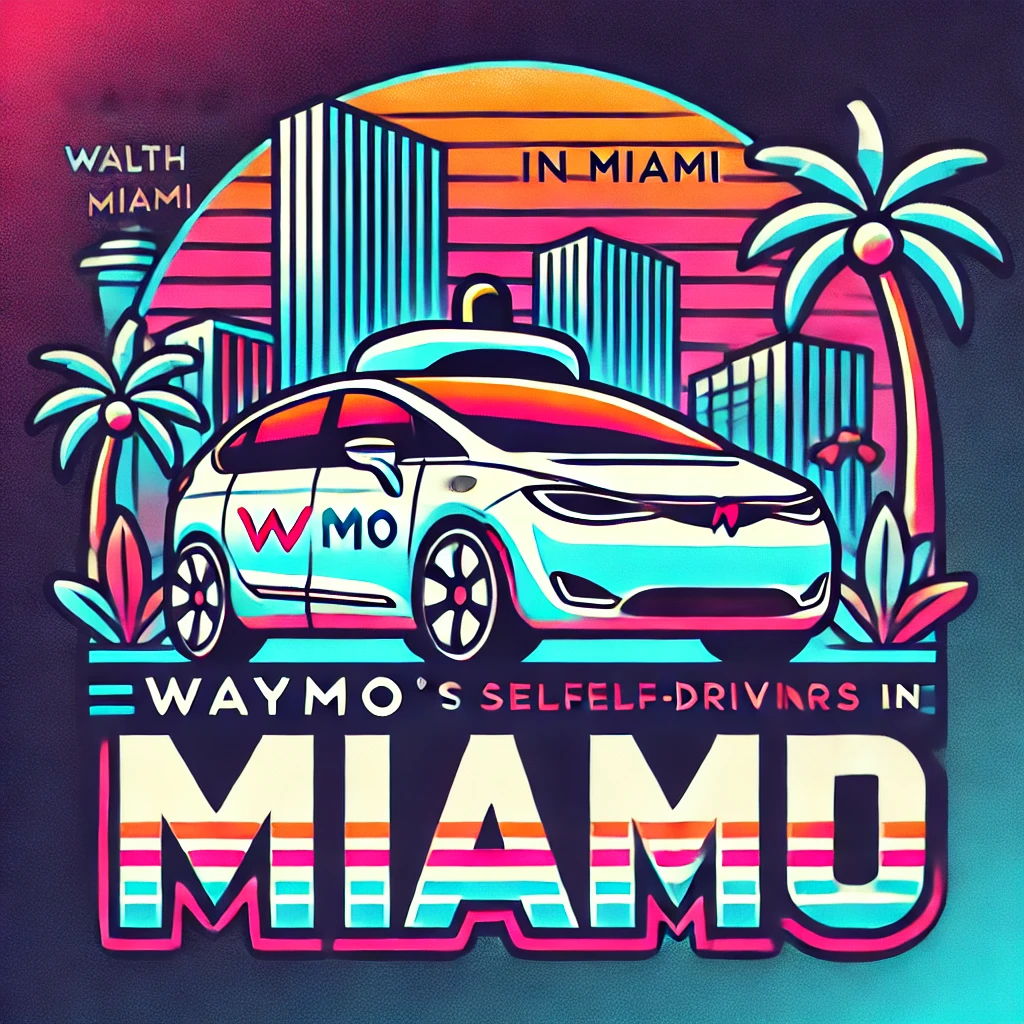
Waymo’s Autonomous Ride-Hailing Services: Miami’s Futuristic Traffic Jam Solution
Share

Miami, the city known for its scorching sun, endless nightlife, and drivers who treat turn signals like optional accessories, is about to add something new to its streets: self-driving cars. Yes, you read that right. Alphabet’s Waymo is bringing autonomous ride-hailing services to Miami, proving once again that Miami can out-weird pretty much any other city in America.
Let’s unpack this.
What is Waymo?
Waymo is Google’s pet project to build cars that drive themselves. These are not your typical rideshare vehicles with chatty drivers offering gum and unsolicited life advice. No, these are sleek, quiet, robot-controlled cars. You summon one with an app, and it shows up without a human behind the wheel. Just you, a robotic chauffeur, and your existential dread.
Waymo already operates in cities like Phoenix, Los Angeles, San Francisco, and Austin. These are all cities with, let’s say, a relatively sane approach to driving. But now they’re bringing the cars to Miami, where traffic rules are considered “strong suggestions,” and the average driver believes yellow lights mean “speed up or you’ll miss your chance at greatness.”
How Will This Work in Miami?
The plan is for Waymo vehicles to hit the streets next year and be fully operational for riders by 2026. This gives Miami drivers about two years to figure out how to coexist with cars that are programmed to follow traffic laws, which is going to be a real culture shock.
For example:
- Miami drivers treat merging lanes like a gladiator sport. Waymo’s cars, however, will politely wait their turn, causing massive confusion.
- Miami’s scooters and cyclists have perfected the art of ignoring every rule of the road. How will the Waymo car react when a motorized scooter zips past going the wrong way down Biscayne Boulevard?
- And what happens when a Waymo car tries to navigate a traffic circle in Coral Gables, where the rules appear to be based on a mix of chaos theory and Mario Kart?
Will Miamians Actually Use This?
Waymo promises a smooth, safe, and stress-free ride. But Miami riders will have questions. For instance:
- “Can I blast Bad Bunny on the speakers, or is the car stuck playing soft jazz?”
- “What happens when I spill cafecito all over the seat?”
- “Can the car find me a better shortcut than Google Maps?”
Also, let’s not forget that this is Miami, where the weather is always either “humid” or “apocalyptic.” What will these cars do during hurricanes? Will they just park themselves and wait for things to blow over? Or will they offer evacuation rides with the voice of Siri calmly saying, “Please remain calm while we’re swept up in the storm surge.”
Why Miami?
Waymo says Miami’s “diverse transportation ecosystem” makes it an ideal city for this experiment. What they really mean is that Miami is a giant petri dish for crazy driving scenarios. If the self-driving cars can survive here, they can survive anywhere. Phoenix has cacti. San Francisco has hills. But Miami has drivers who will cut you off to grab a pastelito and a colada from a window at Versailles. Good luck, Waymo.
Final Thoughts
In all seriousness, autonomous vehicles could change the way we get around Miami. They could reduce accidents (assuming they survive the first week), ease traffic (a.k.a. wishful thinking), and give us more time to scroll Instagram while being chauffeured around town. Or, they could just be the most high-tech addition to the chaos that is Miami traffic.
Either way, we’ll have front-row seats to a sci-fi experiment in the Magic City. So buckle up, Miami. Actually, wait—don’t buckle up. Let the robot do it for you.
(Written by Timothy Lawler – Florida’s Weird History & Current Events Blog)
